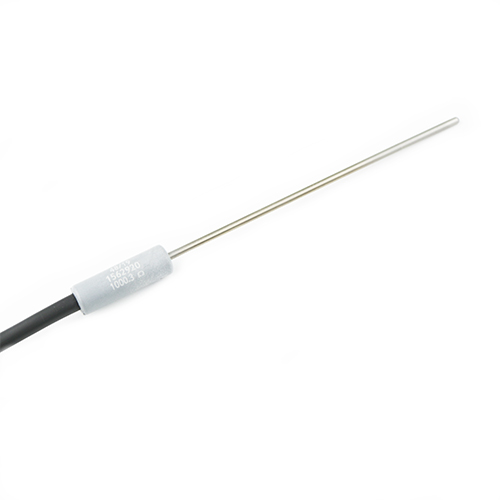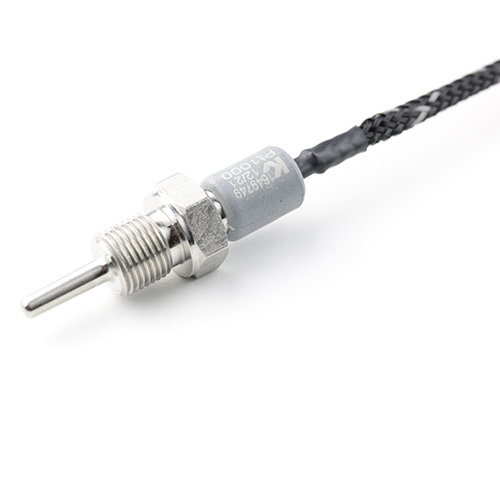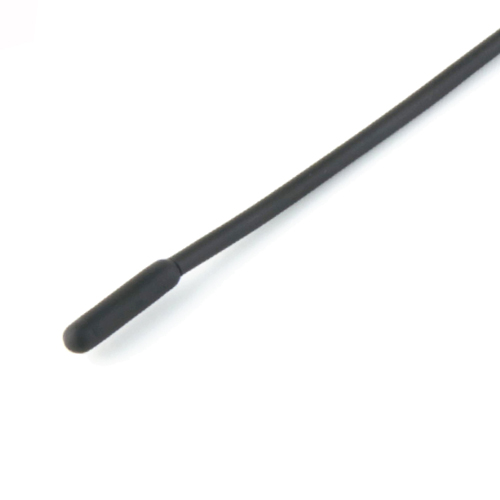Pt1000 Probes
What is a Pt1000?
The Pt1000 is closely related to the Pt100, the most popular resistance thermometer. Pt is for Platinum, which the resistor is made of. 1000 is for its resistance of 1000 Ohms at 0 °C. As with all resistance temperature detectors (RTD), the sensing element changes its electrical resistance with changing temperature.
Characteristics of Pt1000 Sensors
The Pt1000 has a rather linear resistance curve in a wide temperature range. It trumps the Pt100 with its 10x stronger signal. These characteristics make a Pt1000 a good choice when the range of an NTC is too small and the signal of a Pt100 is too weak. The temperature range of Pt1000 temperature sensors extends from -50 to +500 °C. Outside of this range, we recommend the use of a thermocouple. The minimum diameter of Pt1000 probes is typically 3 mm. If you require a smaller diameter, we recommend to use a Pt100 or a thermocouple.









